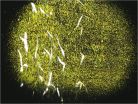(Press-News.org) The U.S. Department of Defense has made progress in reducing the stigma associated with seeking help for mental illnesses such as depression and post-traumatic stress disorder, but more improvement is still needed, according to a new RAND Corporation study.
Despite efforts of both the Defense Department and the Veterans Health Administration to enhance mental health services, many service members still do not seek needed care for mental health problems. Defense officials have made a concerted effort to promote treatment as a way to reduce stigma, according to the study. The department also has worked to create a culture shift where mental health is discussed in the context of readiness and resilience, and where seeking help is defined as a sign of strength.
"We found numerous examples of how the military is encouraging service members with mental illness to get help and treatment, but we also found some gaps," said Joie D. Acosta, lead author of the report and a behavioral scientist at RAND, a nonprofit research organization. "For example, we found language in 12 percent of relevant military policies that characterizes mental health issues in a negative light. In addition, the perceived stigma around getting help isn't the only barrier service members face."
Acosta and her colleagues were asked to inventory and assess stigma-reduction strategies across the military services and the Defense Department as a whole, and to identify strengths and gaps that should be addressed.
RAND researchers reviewed relevant literature on the topic and did micro-simulation modeling of the potential costs associated with stigma, including costs from cycling in and out of treatment, lost productivity, suicide attempts and deaths by suicide. They also interviewed program staff and convened an expert panel.
Many experts believe that the fear of stigma can prevent military members from seeking help for mental health problems, Acosta said. The RAND study did not find an evidence-based link between stigma and the long-term outcomes of not treating those with mental health issues, although stigma may have an influence on treatment success.
Other barriers, such as the perception that support from family and friends provides a more-helpful alternative to professional mental health treatment, influence whether an individual seeks care. Reducing that barrier by half would increase treatment costs by just under $3 million, but would result in more than $9 million in savings in lost productivity and other costs, Acosta said.
The biggest issue for the Defense Department to address is the tension that exists between a command's need to know a service member's mental health status and treatment history, and the service member's right to privacy, Acosta said. The study recommends that a task force assess what type of information mental health providers should share with commanders, and develop clear processes for these exceptions.
The study also recommends the U.S. military explore interventions that directly increase the rate of service members seeking mental health treatment. Focusing primarily on a single barrier to care, such as stigma, may cloud other potential interventions to promote help. Military officials also should consider evidence-based approaches to empowering service members with mental health concerns to support their peers who have mental health needs.
Service members' preferences for self-management may be a key barrier to their getting help for mental health issues, Acosta said. So she and her colleagues recommend that the military develop alternative mechanisms for treatment delivery, such as Internet-based tools.
The military also should better define when a specific mental health issue would prohibit a service member from certain jobs or actions; currently, a large number of policies are vague.
Much of stigma research focuses on schizophrenia or general mental health concerns, rather than post-traumatic stress disorder, anxiety or depression, which are the disorders that may be of most interest to the Defense Department, Acosta said. Understanding how stigma differs among these disorders and whether there are different beliefs about treatment success for these disorders would help the department better target stigma reduction efforts.
INFORMATION:
The study, "Mental Health Sigma in the Military," can be found at http://www.rand.org. Other authors include Amariah Becker, Jennifer Cerully, Michael P. Fisher, Laurie Martin, Raffaele Vardavas, Mary Ellen Slaughter and Terry Schell.
Research for the study was sponsored by the Office of the Assistant Secretary of Defense for Health Affairs and the Defense Centers of Excellence for Psychological Health and Traumatic Brain Injury and conducted within the Forces and Resources Policy Center of the RAND National Defense Research Institute. The institute is a federally funded research and development center sponsored by the Office of the Secretary of Defense, the Joint Staff, the Unified Combatant Commands, the Navy, the Marine Corps, the defense agencies and the defense intelligence community.
The RAND Corporation is a nonprofit institution that helps improve policy and decisionmaking through research and analysis. To sign up for RAND e-mail alerts: http://www.rand.org/newsletters.html
RAND is a registered trademark
US military making progress reducing stigma tied to seeking help for mental illness
2014-09-30
ELSE PRESS RELEASES FROM THIS DATE:
Laser-guided sea monkeys show how zooplankton migrations may affect global ocean currents
2014-09-30
WASHINGTON, D.C., September 30, 2014--Sea monkeys have captured the popular attention of both children and aquarium hobbyists because of their easily observable life cycle -- sold as dehydrated eggs, these tiny brine shrimp readily hatch, develop and mate given little more than a tank of salt water.
Physicists, though, are interested in a shorter-term pattern: Like other zooplankton, brine shrimp vertically migrate in large groups in response to changing light conditions, coming closer to the surface at night and retreating deeper during the day.
Two researchers at ...
Taking thin films to the extreme
2014-09-30
WASHINGTON D.C., September 30, 2014 – Applying a well-known optical phenomenon called thin-film interference, a group of researchers at Harvard University has demonstrated the ability to "paint" ultra-thin coatings onto a rough surface -- work that holds promise for making future, flexible electronic devices, creating advanced solar cells and detailing the sides of next-gen rocket ships and spacecraft with extremely lightweight decorative logos.
When light passes through oil in water, it becomes iridescent, revealing a myriad of colors that glisten and shift along with ...
Unexpected new mechanism reveals how molecules become trapped in ice
2014-09-30
WASHINGTON D.C., Sept. 30, 2014 – Ice is ubiquitous in nature—found within terrestrial and astrophysical environments alike—and contains many atoms and molecules trapped inside it. For example, ice beneath the world's oceans hosts a vast reservoir of greenhouse gases, which if released would have a profound effect on climate change.
On the earth's surface, seasonal ice and permafrost-covered regions represent a vast reservoir for the collection, concentration and release of environmental and trace gases—encompassing national security concerns about the persistence and ...
Breakthrough study discovers 6 changing faces of 'global killer' bacteria
2014-09-30
Every ten seconds a human being dies from pneumococcus infection making it the leading cause of serious illness across the globe
Research discovers six unique states of pneumococcus
Knowledge of these six characteristics can help in development of tailored vaccines
Every ten seconds a human being dies from Streptococcus pneumoniae infection, also known as pneumococcus, making it a leading global killer.
An interdisciplinary team of researchers from the University of Leicester in collaboration with international experts have unlocked a genetic switch controlling ...
Americans undergo colonoscopies too often, study finds
2014-09-30
Colonoscopies are a very valuable procedure by which to screen for the presence of colorectal cancer. However, it seems that healthy Americans who do undergo this sometimes uncomfortable examination often have repeat screenings long before they actually should. Gina Kruse of Massachusetts General Hospital in the US and colleagues advise that endoscopists stick to the national guidelines more closely. Their findings appear in the Journal of General Internal Medicine, published by Springer.
Current national guidelines strongly recommend that adults aged 50 and older should ...
Longitudinal report shows challenging reality of ageing with an intellectual disability
2014-09-30
Dublin, Ireland, September 30th, 2014 – A new report launched today by the Intellectual Disability Supplement to TILDA (The Irish Longitudinal Study on Ageing) conducted by academics from the School of Nursing and Midwifery, Trinity College Dublin, Ireland, has highlighted the serious, complex and unique health and social challenges facing Ireland's intellectual disability population.
The IDS-TILDA study is the first study of its kind in Europe and the only one in the world with the ability to compare the ageing of people with intellectual disability directly with the ...
Contaminated water linked to pregnancy complications, BU study finds
2014-09-30
Prenatal exposure to tetrachloroethylene (PCE) in drinking water may increase the risk of stillbirth and placental abruption, according to a new study led by a Boston University School of Public Health researcher.
The study, published in the journal Environmental Health, compared 1,091 PCE-exposed pregnancies and 1,019 unexposed pregnancies among 1,766 women in Cape Cod, Ma., where water was contaminated in the late 1960s to the early 1980s by the installation of vinyl-lined asbestos cement pipes. PCE exposure was estimated using water-distribution system modeling software. ...
NEJM: Crizotinib effective in Phase 1 trial against ROS1 lung cancer
2014-09-30
The New England Journal of Medicine reports positive results of a phase 1 clinical trial of the drug crizotinib against the subset of lung cancer marked by rearrangement of the gene ROS1. In this multi-center study of 50 patients with advanced non-small cell lung cancer testing positive for ROS1 gene rearrangement, the response rate was 72 percent, with 3 complete responses and 33 partial responses. Median progression-free survival – the time it takes for the disease to resume its growth after being slowed by treatment – is estimated at 19.2 months with exactly half of ...
Pollution linked to lethal sea turtle tumors
2014-09-30
DURHAM, N.C. -- Pollution in urban and farm runoff in Hawaii is causing tumors in endangered sea turtles, a new study finds.
The study, published Tuesday in the peer-reviewed open-access journal PeerJ, shows that nitrogen in the runoff ends up in algae that the turtles eat, promoting the formation of tumors on the animals' eyes, flippers and internal organs.
Scientists at Duke University, the University of Hawaii and the National Oceanic and Atmospheric Administration (NOAA) conducted the study to better understand the causes behind the tumor-forming disease Fibropapillomatosis, ...
Adolescent exposure to thc may cause immune systems to go up in smoke
2014-09-30
When it comes to using marijuana, new research, involving mice and published in the October 2014 issue of the Journal of Leukocyte Biology, suggests that just because you can do it, doesn't mean that you should. That's because a team of Italian scientists have found that using marijuana in adolescence may do serious long-term damage to the immune system. This damage may result in autoimmune diseases and chronic inflammatory diseases, such as multiple sclerosis, inflammatory bowel disease and rheumatoid arthritis in adulthood.
"I hope that the knowledge that early exposure ...



